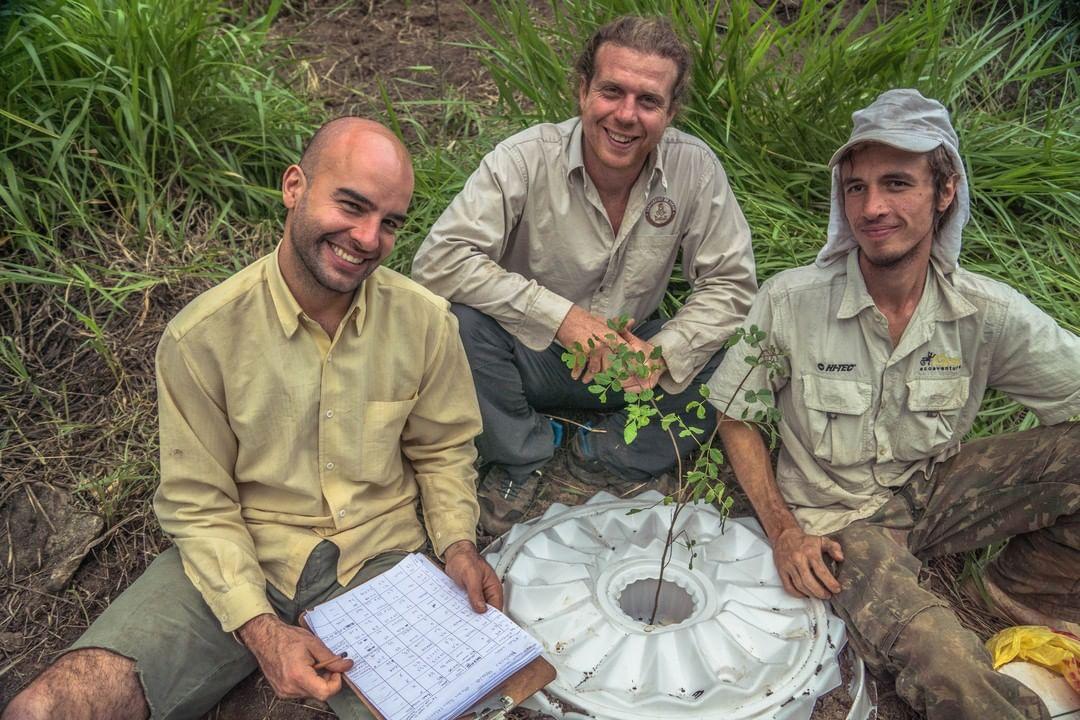
At least 14.2 million acres of land in the Atlantic Forest has the potential to grow trees - and Brazilian company Nucleário has found a faster and more sustainable way to do so. Nucleário’s use of biomimicry resulted in the company winning the 2018 $100,000 Ray of Hope Prize. Biomimicry is the imitation of models, systems, and elements of nature for solving complex human problems.
Championed by the notion of businesses doing well by doing good, the Ray C. Anderson Foundation along with the Biomimicry Institute have been working together to understand how nature-inspired design can solve problems such as deforestation, and how these solutions can become commercially viable. As a result, the Ray of Hope Prize was launched to crowdsource nature-inspired solutions through the Biomimicry Global Design Challenge.
The Atlantic Forest passes through Brazil, Argentina and Paraguay and is one of the world’s most ecologically diverse regions. Unfortunately, it is also one of the most threatened and exploited regions as deforestation for commercial agriculture, particularly soy production, dominates.
Globally, every year the world loses 18.7 million acres of forests, equivalent to 27 soccer fields every minute, according to the WWF. This deforestation robs animals of their habitats and is a cause of global warming, making sustainable reforestation a global priority for many NGOs. According to many international organizations, if current deforestation levels continue, the world's rainforests may completely disappear in the next 100 years.
Traditional methods of planting and maintaining trees is logistically complicated and expensive, as it is labor intensive and requires regular visits to the reforestation areas. Nucleário’s solution reduces the need of regular manual maintenance of seedlings, the main bottleneck in remote reforestation projects.
"If you just plant seedlings and go away, more than 90 percent will die. Every three months, you have to cut grass, water, apply fertilizer to avoid this,” said Bruno Rutman Pagnoncelli, CEO and founder of Nucleário. An average of 30 percent of planted tree saplings do not survive to become mature trees, so Nucleário says the company is working towards to reduce this number.
Nucleário's plantation device helps seedlings grow like they would in nature by providing them controlled water supply, protecting them from leaf-cutting ants, and preventing them from losing their nutrients. This increases the survival rate of seedlings at a lower cost of time and money, allowing for more efficient reforestation. Designed to safeguard seedlings for three years after plantation, the device then eventually decomposes into the soil.
The Nucleário team has been testing a prototype of this system with the WWF in the Cerrado region of Brazil, the largest savanna ecosystem in South America.
After winning the Biomimicry Global Design Challenge for climate change, Nucleário undertook an intensive 12-month program at the Biomimicry Launchpad that assisted them in further developing their concept with industry experts. It is after this program that they were selected from among five others to win the $100,000 Ray of Hope prize. The Biomimicry Launchpad is the world’s only accelerator program that supports early-stage entrepreneurs working to bring nature-inspired climate change solutions to the market.
Other projects competing for the prize at the Biomimicry Launchpad were RootLink, which connects urban farmers to end users; Refish, a device that can remove particles from the air; Extraction, a filter system that uses the same process as nature for carbon capture; Cooltiva, which mimics nature to ventilate buildings; and BioThermosmart, which applies lessons from animals’ circulatory systems to develop a temperature control system for buildings that harvest waste heat, and cycles it back into the system.
Innovations with biomimicry at their core offer hope that we can use the lessons of nature and evolution to protect it for future generations.
Image credit: Nucleario

Abha Malpani Naismith is a writer and communications professional who works towards helping businesses grow in Dubai. She is a strong believer in the triple bottom line and keen to make a difference. She is also a new mum, trying to work out a balance between thriving at work and being a mum. In her endeavor to do that, she founded the Working Mums Club, a newsletter for mums who want to build better careers and be better mums.














